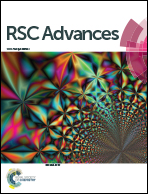A hexameric peptide purified from Styela plicata protects against free radical-induced oxidative stress in cells and zebrafish model
Abstract
To prepare antioxidative peptide from Styela plicata, nine proteases were employed for enzymatic hydrolysis, and the antioxidative activities of the hydrolysates were investigated using an electron spin resonance (ESR) spectrometer. Among the hydrolysates, tryptic hydrolysate exhibited higher antioxidative activities than those of other enzymatic hydrolysates. In order to purify a peptide having potent antioxidative properties, tryptic hydrolysate was separated using consecutive chromatographic methods, and the antioxidative peptide was identified to be Leu-Pro-His-Pro-Ser-Phe (696.3 Da) by Q-TOF ESI mass spectroscopy. It scavenged peroxyl, hydroxyl and DPPH radicals at IC50 values of 0.05 mM, 1.98 mM and 0.17 mM, respectively. Pretreatment with the purified peptide decreased the death of AAPH-treated cells, and reduced the generation of intracellular reactive oxygen species (ROS) in a dose-dependent manner in AAPH-treated cells. Furthermore, the purified peptide significantly reduced ROS generation and cell death in a zebrafish model. These results indicate that enzymatic hydrolysates of S. plicata protein possess potent antioxidative activity.


 Please wait while we load your content...
Please wait while we load your content...